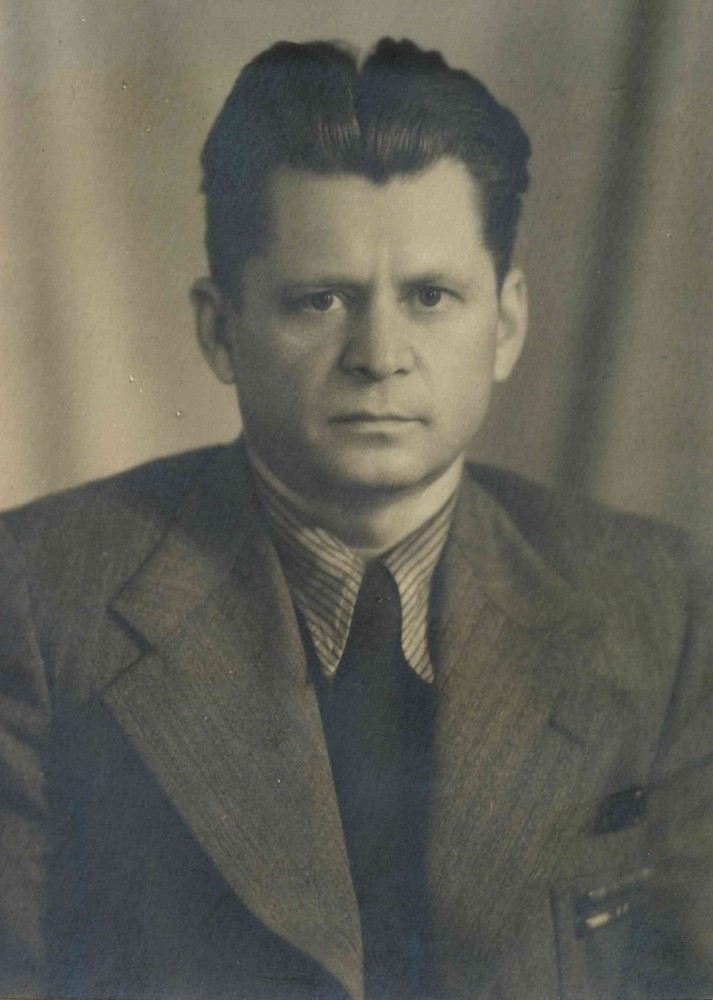 Nikolai Khomutetsky
Nikolai KhomutetskyIn the first war summer, the dean of the LISI (now SPbGASU) Faculty of Architecture, PhD of Architecture Nikolai Khomutetsky (1905–1973) signed up as a volunteer, refusing to reserve. As part of the 49th Army of the Western, then the 2nd Belorussian Front, he went through a combat path from the Moscow region to Berlin. He returned to his native institute only at the end of December of the victorious forty-fifth year in the rank of major, and three years later he headed it.
By the beginning of World War II, a graduate of the Leningrad Institute of Municipal Construction Engineers (later LISI, now SPbGASU) Nikolai Khomutetsky was already a fairly well-known specialist and scientist in the field of architecture. In 1927, he entered the institute and soon headed the youth group of the All-Russian Association of Proletarian Architects.
The project of a communal house for two thousand inhabitants, developed by this group, received the second prize at the competition of the Lensoviet. In 1934, according to its designs, houses were built in the Krasny Putilovets residential area on Stachek Avenue, in 1936 - three school buildings for 880 pupils each (Vvedenskaya st., 15; Pestel st., 16; and Yaroslavskaya st., 13). In 1937, he was elected the first chairman of the Leningrad branch of the Union of Architects of the USSR, worked part-time at Lenproekt, prepared the first congress of architects in Moscow and was the editor-in-chief of the journal Architecture of Leningrad. In 1938 he defended his thesis, in 1941 he became the dean of the Faculty of Architecture.
And then the war broke out. A valuable specialist and dean of the faculty had a reservation, but he volunteered to join the Red Army.
After accelerated training at the Military-Political Academy he immediately went to the front. So the scientist became an instructor in the Political Department of the 49th Army of the Western, then the 2nd Belorussian Front. The 49th Army took an active part in the battle near Moscow against a superior enemy. It fought stubborn defensive battles, holding down the German troops. In such inferno, Nikolai Fedorovich received a baptism of fire. He knew German well, therefore, as an interpreter, he participated in the interrogations of prisoners, studied captured documents, wrote anti-fascist leaflets, and conducted special propaganda at the front line through a powerful loud-speaking installation. He received a shell shock, but went through the whole war and met victory in Berlin.
In the difficult post-war years (1948–1952), Nikolai Fedorovich worked as the director of the LISI. Under his leadership, new specialties were launced at the institute, and the number of students increased many times over. In 1951, the first educational and methodological conference of the teaching staff was held at LISI, at which detailed decisions were made aimed at significantly improving educational work.
In 1955, Nikolai Khomutetsky defended his doctoral dissertation, which was brilliantly reviewed by academician, well-known painter, art critic, teacher Igor Grabar. Throughout his life, Nikolai Fedorovich successfully combined practical, pedagogical and scientific work. According to his designs, 12 different structures were built in Leningrad.
In scientific circles, Nikolai Fedorovich was widely known as an outstanding scientist in the field of the history of foreign and domestic architecture. He published a large number of works on the history of architecture, trained more than 2,500 specialists in the field of architectural history, and was the supervisor of 15 postgraduate students and external doctorate students.
Other materials of the "Scientific Regiment" project:
Our Graduate Built the Road of Life
Front Line of the Architect Aleksandr Nikolsky
Researcher who Developed Science in Besieged Leningrad
Fights of Student Klinov
Engineer of the 3rd Belorussian Front
Nineteen-Year-Old Gunner Stormed Berlin
Path of a Volunteer: from Front-Line Roads to Space Development
Ivan Solomakhin: "The Most Memorable Battle was for this Devil's Hill!"
Fiery Dnieper of the Hero of the Soviet Union Aleksandr Prygunov
Approaching to the Victory
Fedor Komal's Front: from the War Start to the Victory
Junior Political Instructor Boris Gubanov: “Shells Were Whizzing, and the Ground Took off Nearby”
Viktor Kvyatkovsky, Radio Reconnaissance Operator of the Baltic Fleet
How the Chief Architect Nikolai Baranov Kept Leningrad "Hidden" from the Enemy